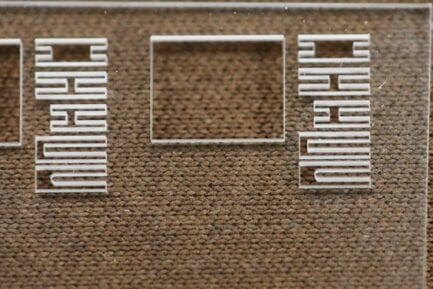The advent and subsequent advancement in micromachining technologies and processes has allowed designers and manufacturers to create and fulfill many novel materials and parts. Laser micromachining offers micromachining engineers the ability to create precise, clean, and effective designs at a micron-level, while also having the unique ability to repeat the process and thus produce products at scale without sacrificing quality. In this article, we’ll examine how laser micromachining is providing a torchlight to the microscopic world, leading to incredible advancements across a large number of industries.
What is Laser Micromaching?
In simplest terms, laser micromachining is the versatile process that is used for manufacturing plastic, glass, metal, and thin substrates. The process includes different mechanisms such as cutting, drilling, marking, turning, and threading. Laser micromachining is nowadays a common method of surface modification. Most commonly, laser micromachining is utilized for the controlled facture in fine items, and provides enhancement opportunities for drilling micro holes on the chosen substrate.

Why Use Lasers for Micromachining?
Lasers are the preferred tool when it comes to micromachining. Using lasers in glass micromachining allows engineers to create and manufacture highly precise designs. Lasers boast the ability of non-contact machining. This means that mechanical damage to the parts being processed can be avoided. Secondly, laser micromachining is a convenient one-step process. Different from etching and conventional mechanical approaches that involve multiple stages, laser micromachining greatly diminishes manufacturing complexity…which helps companies save on budget and produce products at scale. Finally, lasers are a flexible tool, since they are able to be programmed with a paired computer program, allowing intricate, yet precise, designs to be completed.
Applications of Laser Micromachining
As we’ve mentioned before, advances in laser micromachining technologies have enormously increased our ability to manipulate microscopic structures and processes. Ultimately, this means that the applications for laser micromachined products is vast. Below are some of the major applications and industries benefiting from laser micromachining.
Microelectronics
As processing power increases while the size of devices decreases, companies are looking for micro-manufacturing partners who can create, at scale, custom and precise pieces for their products. Microvia drilling and resistor trimming are two common uses for laser micromachining in microelectronics.
Medical Devices
The ability to use a micromachined device in the medical field has lead to incredible advancements in treatments and patient care. For example, laser micromachining is playing a major role in crafting stents and angioplasty surgery for cardiac patients. Furthermore, micro-medical devices allow patients to simultaneously track diabetes/glucose levels AND administer the proper dosage of insulin when needed.
Aerospace
Modern jet engines have thousands of tiny holes drilled into various components such as turbine blades, nozzle guide vanes, combustion chambers, and after burners. These holes allow for a cooling layer to form over these components when airflow passes through them at high speeds. The precision and scale needed for these holes to be drilled, and to be meet FAA standards, can only be accurately done via a laser micromachining expert.
Citrogene: Laser Micromachining Engineers
Citrogene is the leading glass microfabrication expert in the world. We have the skills, knowledge, tools, and expertise to execute your custom design to perfection. When it comes to producing microfabricated devices, pieces, or instruments, there is only one trusted microfabrication partner to consider: Citrogene. Contact us today to learn more about our glass microfabrication capabilities.
